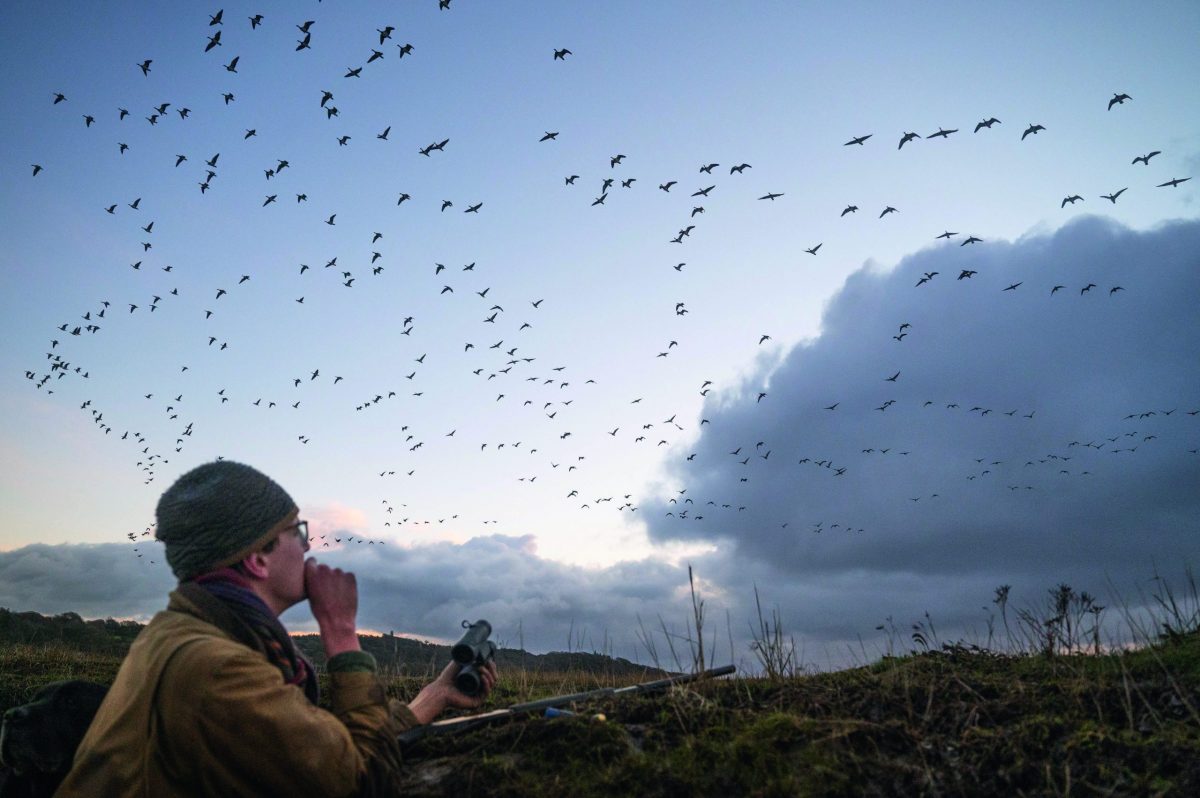Identifying animals and birds is not always a simple matter – as the Berlin lion scare showed
Following a 300-strong police hunt for the Berlin 'lion', it's clear there's more to species identification than meets the eye, says Alasdair Mitchell

Identification skills are crucial for the accurate selection of geese
The Berlin lion scare appears to be over. It was fun while it lasted. After witnesses claimed to have seen a female lion prowling around a suburb and produced a blurry video, police ordered residents to stay indoors. An outdoor concert was moved. Helicopters, armoured vehicles, drones, thermal-imaging cameras and more than 300 police officers spent a day and a night scouring woodlands in the area. The usual suspects began demanding that the lion must not be harmed.
But the story turned out to be a pig in a poke. It began to unravel when the video was examined more closely. A local circus boss told reporters: “If that’s a lion, I’ll eat my broom.” The sound of a lion roaring in the Zehlendorf district inside Berlin’s borders caused a momentary media kerfuffle. But it turned out to have been played through Bluetooth speakers by a group of teenagers. This jape was described as “neither helpful for the police nor the local community” by a somewhat peeved official.
Berlin ‘lion’ probably a boar, authorities say https://t.co/WigejwjU1r
— BBC News (World) (@BBCWorld) July 21, 2023
The police eventually issued a statement lifting all restrictions and clarifying that the animal was almost certainly a wild boar, of which there are multitudes within the Berlin area. The authorities were left looking rather sheepish.
Genuine lion
Mind you, there is a record of a genuine escaped lion in Berlin, dating back to World War II. A recent letter in The Times explained: “… under nightly bombardment, residents thought it would be safer to sleep in the park. Our great-great-great aunt spent a night on one of the benches, and was joined by someone wearing a thick fur coat. When morning broke she found a lion curled up next to her. The zoo had been bombed and the poor lion sought the only source of security it had ever known, a human. It trotted off without harming her.”
Identifying animals is not always a simple matter under poor light. A cardinal rule of shooting is that you should never, ever pull the trigger unless you are completely certain of what your gun is pointing at. The bad old days of “what sort of bird is that – let’s shoot it and find out” are long gone, if indeed they ever existed.
The issue of accurate quarry identification has recently been thrown into focus by the recent changes in Scottish deer legislation. This includes allowing thermal and light-intensifying sights, as opposed to spotting scopes, to be used for shooting deer at night under licence.
This change, which comes into effect this November, has provoked a certain amount of comment among deer managers. Most see it as inevitable and welcome, given the advances in technology and the pressure to cull more deer. But some are worried that thermal imaging sights do not provide the necessary level of quarry identification and safety, especially in determining a safe backdrop at night.
Others point out that proper quarry identification and scrupulous safety are the shooter’s responsibility, no matter what the conditions or the technology.
Wildfowlers have to be adept at identifying their quarry in half-light, or even under the moon. I remember once sitting with my eight-bore among the driftwood on the foreshore at Lindisfarne, Northumberland. The light had faded and not much was going on in my sector.
Suddenly, a small group of geese appeared, flying in from the sea silently. I knew they were geese from their silhouettes. They swooshed over me at a very killing height. I raised my gun and… held fire. There was something not quite right. The birds flew on, straight over me. As they crossed the sea wall behind me, they suddenly broke into a babble of yapping calls, which revealed them to be barnacle geese – a protected species we seldom saw back then. Thank God I hadn’t fired.
My relief was redoubled when, soon after, I discovered there were two birdwatchers 30 yards along the shore. They had seen the geese coming over me. What might have happened if I had dropped a barnacle at their feet?
The incident reminded me of a story told to me by the late Percy Betts, who was a well-known goose guide in south-west Scotland in his day. One of his party accidentally shot a Greenland whitefronted goose from amid a skein of greylags. Greenland whitefronts had only recently come off the quarry list. Deeply embarrassed, the shooter asked what he should do. “Get plucking,” growled Percy.








